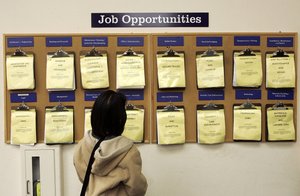September’s long-awaited jobs report showed a larger than expected increase in non-farm jobs, but overall unemployment continues to rise, according to data released Thursday by the Bureau of Labor Statistics.
Nonfarm payrolls added 119,000 positions in September, more than double Wall Street’s expectations of 50,000 jobs added for the month. The bulk of the job gains in September stemmed from healthcare and hospitality sectors. Many other industries, such as manufacturing and professional white-collar services, are shedding workers.
Average hourly earnings were up by 0.2% for the month as well, a 3.8% rise compared to September 2024.
Overall unemployment continues to climb, however. The BLS said the rate stood at 4.4% in October. It’s the highest level since October 2021.
The September jobs report does little to settle the ultimate question for Fed officials at their next meeting set for Dec. 9 and 10: to cut or not to cut borrowing costs. There’s a pervasive divide on the Federal Open Market Committee tasked with steering interest rates, and it was on full display with the FOMC minutes released Wednesday of the two-day September meeting.
The minutes said “participants expressed strongly differing views” about the appropriate action to take in December. One faction of FOMC officials are satisfied with pausing further interest rate reductions after two back-to-back quarter point cuts this year. Other officials believed another cut “could well be appropriate.”
The September jobs report does hand an argument to both sides. Inflation hawks can point to a resilient labor market as a case to sit still on further rate cuts. Officials at the opposite end will single out the rising unemployment rate to argue for slashing interest rates further.
One revision is sure to raise eyebrows, though. The BLS revised August data to demonstrate the U.S. economy shed 4,000 jobs that month.
Borrowing costs currently stand between 3.75% and 4%. A lower interest rate tends to be connected with cheaper credit, which stimulates economic growth across most sectors and shrinks costs on mortgages, auto loans, and more.
This was the first BLS jobs report released in two months, due to a government shutdown that virtually shuttered all activity at the BLS for over seven weeks. The BLS announced Thursday that it would not release an October jobs report since it wasn’t able to collect household surveys on employment status in real-time.
That information will be rolled over into the November jobs report scheduled to be released on Dec. 16, meaning that the next monthly jobs data available won’t be available after the Fed meeting.

